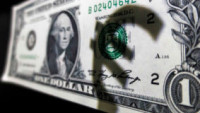 Stock markets in Europe and the US rallied yesterday on the news the Trump administration would hold-off on introducing new tariffs on some goods until December.
Stock markets in Europe and the US rallied yesterday on the news the Trump administration would hold-off on introducing new tariffs on some goods until December.
The announcement was the one bit of good macro news in the past few days, and it sparked a spate of buying. Trade talks between the US and China will take place in September, and traders are a little more optimistic about the situation now.
Chinese imports such as electronic goods, clothing and footwear will not see tariffs being imposed on them until December, and President Trump says the delay to the introduction of tariffs will ‘help a lot of people’. The move should help out shoppers ahead of the Christmas shopping rush. By the time December comes around the US will be less than one year away from the next presidential election, and Trump won’t want to be remembered as the Grinch. Yesterday’s announcement also boosted global equity market sentiment, and Donald Trump loves a stock market rally, although the trade spat is still far from resolved.
Overnight, China revealed a number of economic reports. Fixed asset investment was 5.7%, while economists were expecting it to hold steady at 5.8%. Industrial production was 4.8%, and the consensus estimate was 5.8%, and keep in mind the previous update was 6.3%. Retail sales came in at 7.6%, and dealers were anticipating a drop to 8.6% from 9.8% in June. Overall, it was a poor set of numbers. The Chinese central bank fixed the yuan at 7.0312, higher than expected, but stocks in Asia gained ground on the back of the delay to the tariffs.
The US inflation figures yesterday were respectable as the headline CPI rate ticked up to 1.8% from 1.6%, and the core reading came in at 2.2%, up from 2.1%. Demand is firm in the US, and the most recent employment data paints a picture of a jobs market that is in rude health. Last month the Fed cut interest rates, and seeing as CPI is higher, and for now trade tensions have cooled a little, we might see a dialling back in calls for another rate cut in September.
Sterling gained ground against the euro yesterday on the back of the solid UK jobs report. Unemployment ticked up to 3.9%, but it is still very low in the grand scheme of things, and the average earnings excluding bonuses jumped from 3.6% to 3.9%. Earnings are now at the highest level since the credit crisis, but consumer confidence remains subdued due to fear about a no-deal Brexit.
The rally in stocks and the US dollar yesterday was bad news for gold as the traders dropped the commodity in favour of riskier assets, and the inverse relationship with the greenback hurt it too. The metal traded below the $1,500 mark shortly after the delay to the tariffs were announced, and even though it lost ground yesterday, it remains in its wider positive trend.
The German flash GDP reading will be released at 7am (UK time), and the consensus estimate is -0.1% for the second-quarter, on a quarter-on-quarter (QoQ) basis. There has been growing chatter that Europe’s largest economy is heading towards a recession, and this figure report will be closely watched. Yesterday’s ZEW economic sentiment report spooked traders as it dropped to a level last seen in late 2011.
On a QoQ basis, eurozone flash GDP is expected to be 0.2% for the second-quarter, and the figure will be announced at 10am (UK time).
French CPI is tipped to hold steady at 1.3%, and the update will be posted at 7.45am (UK time).
UK CPI and core CPI will be posted at 9.30am (UK time) ,and it is expected to cool to 1.9% from 2% in June, while the core reading is expected to hold steady at 1.8%. The core reading is often seen as better gauge of demand, and traders will be wondering is demand is dipping on account of Brexit fears.
At 3.30pm (UK time) the Energy Information Administration will release the latest US oil and gasoline inventory data, and dealers are expecting a fall in inventories of 2.76 million barrels and 810,000 barrels respectively.
EUR/USD – remains in the wider down trend of 2019, and if the bearish moves continues it might target the 1.1000 area. A rally might encounter resistance at the 1.1300 region – the 200-day moving average.
GBP/USD – has been driving lower since mid-March, and if the bearish move continues it might target the 1.2000 region. The 1.2200 area might act as resistance.
EUR/GBP – has rallied for over two months, and if it holds above 0.9200, it might bring 0.9410 into play. A move to the downside might put 0.9089 on the radar.
USD/JPY – has been in a down trend since late April, and if the bearish move continues it might target the 104.63 region. Yesterday’s move might have been a key day reversal, and should it push higher, resistance might be found at the 50-day moving average at 107.82.
_______________
Other Forex Forecasts













